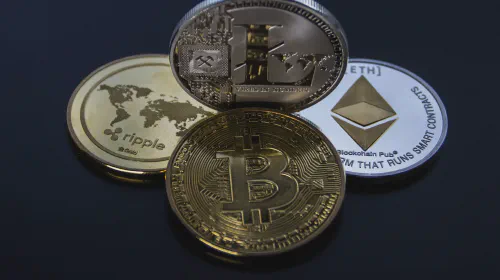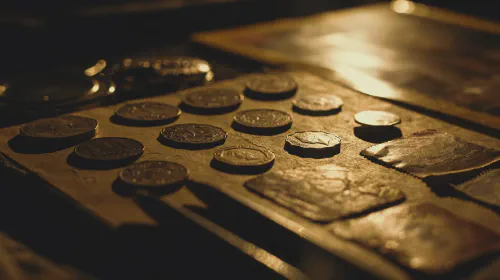How Many Bitcoins Are There and How Many Are Left?
Salomon Kisters
Aug 30, 2022This post may contain affiliate links. If you use these links to buy something we may earn a commission. Thanks!
Bitcoin has transformed the online world since it was launched more than a decade ago. Its blockchain technology model has inspired many digital currencies and business applications. Bitcoin is now a household term, even for many of those who do not fully understand it.
There are many reasons behind Bitcoin’s allure. First, its mysterious creator – or creators – recognized as Satoshi Nakamoto has been heralded as a visionary. For some, the decentralized nature of digital currency means they don’t have to worry about banks or financial regulatory agencies. Others are enthralled by the rags to riches stories of many early adopters.
But as with many breakthroughs in life, there is a negative side to Bitcoin. Bitcoin is infamously the currency of choice on the dark web, the internet space where criminal organizations operate for illicit dealings. Its value is also prone to falling quickly, and many fortunes have, thus, been lost. Then there’s its enormous power consumption, which Bitcoin detractors never fail to point out.
So what makes Bitcoin special? A big part of the story is the fact that its supply is limited. We’ll explore this and more about Bitcoin in this blog article.
What is Bitcoin?
Bitcoin is the most recognized cryptocurrency in the world. It works through a network of computers of the same name, using a combination of a decentralized electronic ledger on a blockchain, cryptography, and a software protocol that helps participants on the network to agree on transactions.
In October 2008, Satoshi Nakamoto published a whitepaper that described Bitcoin as an electronic peer-to-peer cash exchange system. The idea behind his proposal was to create a network for exchanging digital currency that could operate without any approvals from third parties. Nakamoto launched the bitcoin network in 2009.
Over the years, the value of the cryptocurrency has skyrocketed, attracting many online investors. Today, Bitcoin can be traded for fiat currency across several cryptocurrency exchanges and is being adopted into the banking systems of many countries.
Let’s take a closer look at its design.
The Blockchain
A blockchain is a public database that is distributed among several computers on the network called nodes. A network node records every transaction into a block.
Every block is linked to the previous block through a hash code. The hash is cryptographically protected for security reasons. Every network node stores a copy of the blockchain. So at any given moment, there are multiple copies of the electronic ledger present on the internet.
To add new transactions, the blockchain automatically adds a new block after a fixed block time. This allows the network to operate independently of any third party.
The Cryptocurrency
Bitcoin is the main currency token of the network. It acts as the unit of account. It is abbreviated as BTC or occasionally as XBT. It is represented in Unicode with its own symbol (₿). The smallest unit of Bitcoin is one satoshi (named after its creator) which is equal to one hundred millionth (1/108) of a Bitcoin.
All Bitcoins on the blockchain are linked to a bitcoin address. The bitcoin address has two parts:
- A public key, which can be revealed to anyone, and
- A private key, which needs to be kept secret and is used to sign transactions
Transactions
When a person wants to make a Bitcoin transaction, they need to join the network and enter transaction parameters (addresses, transaction amounts, etc.). The parameters are broadcast over the network. If the transaction is verified by the network, the relevant transaction information is broadcast to all nodes on the blockchain.
To send Bitcoins to another user, the sender must enter the receiver’s public address and sign the transaction with their private key. Once the transaction is signed, the private key is considered to be consumed for that Bitcoin transaction. In this way, the private key is never revealed.
Mining
The blockchain records its transactions through a service called mining. This is carried out by network nodes. The main job of a node is to verify transactions on the network and record the information into the blockchain. Once that is done, the node charges a transaction fee to the users. As a transaction block is completed, a new block needs to be formed.
To create a new block, the blockchain requires Proof-of-Work (PoW). PoW is a mechanism through which the node finds an SHA-256 value for a previous block with a ’nonce’ value that is unique to the block.
This computation requires computational power for completion. Once the values have been matched correctly, a new block will be added to the blockchain, and the miner will be rewarded BTC for the effort.
The mining reward is important as it incentivizes the competition of Bitcoins with the addition of computers to sustain the network.
What are the Advantages of Bitcoin?
Bitcoin offers people many advantages over conventional banking networks:
- Bitcoin is trustless: That means there is no need for a central bank to verify transactions. It is, therefore, free from the influence of governments and the politics that guide their principles.
- Bitcoin is immutable: A digital copy of the ledger contains all transactions on the blockchain. It is almost impossible for the transaction record to be lost, as the network is constantly active.
- Bitcoin is secure: Because of the complexity of the cryptographic algorithms running the blockchains, Bitcoin addresses are relatively safe from hackers. It takes considerable computing power to compute a private address key from a public address key.
- Bitcoin is decentralized and anonymous: Anyone can join the network and participate in the mining and transacting process without any identification document. Only a computer with an internet connection is required.
- Bitcoin is transparent: Every transaction on the blockchain is traceable to a public address.
Bitcoin Facts
- The total number of Bitcoins issued is 21 million.
- The identity of Bitcoin’s creator, Satoshi Nakamoto, remains anonymous. Some suspect it to be a group rather than an individual.
- Bitcoin has a block time of 10 minutes.
- Bitcoin is the most popular cryptocurrency, sitting at #1 on every exchange.
- Bitcoin has a block size of 1 MB. Check out this article to learn more about block sizes.
- As of now, there are more than 750,000 blocks created.
- Bitcoin’s first block (the genesis block) was created on January 3, 2009. It had a mining reward of 50 BTC.
- The creator encoded this message in Bitcoin’s genesis block: “The Times 03/Jan/2009 Chancellor on brink of second bailout for banks”.
- Bitcoin is legal tender in two countries: El Salvador is one of them. Can you guess the other country? (Read onwards to find out).
- In 2022, Bitcoin’s energy consumption was estimated to be 131 TWh. That’s 0.29% of the world’s total power consumption!
- On November 10, 2021, Bitcoin reached its all-time high trading value of $68,789.
- The word Bitcoin was added to the Oxford English Dictionary in August 2013, more than four years after its launch. The word satoshi was added in October 2019.
- The total number of Bitcoins will be distributed around the year 2140.
- Every four years, the mining reward for Bitcoins is reduced by half its amount. The current reward for every block mined is 6.25 BTC.
- The Bitcoin network averages about 3-7 transactions every 10 minutes.
Why is a Limited Number of Coins Good for Bitcoin?
Because the number of bitcoins is capped, its circulation in the market will remain limited within this range. Therefore:
- As more buyers enter the market to buy Bitcoin, it becomes scarce.
- Scarcity will lead to increased demand.
- Increased demand for Bitcoin will cause the price to surge.
This is what has happened since its launch.
Consider this fact: when the currency was issued, its value was… 0. Yes, you read that right! It was worth nothing. Today its current value is over $22,000.
Now, if you are an investor for the long haul, that means you would have profited from buying bitcoin early and selling over the long term. Bitcoin’s distribution protocol is now distributing lesser amounts of coins due to halving, and that means the supply of new Bitcoins into the market will decrease over time.
The result is that the value of the currency largely depends on the market perception, and there are very limited ways to manipulate the price. In the case of bitcoin, even central banks have no power. The limited supply of Bitcoins also means that it is deflationary in nature. Over time, the prices of goods and services in Bitcoins will decrease since there won’t be enough currency in the market to support price hikes.
How many Bitcoins are Left?
A quick survey of the market shows that 19.12 million coins are in circulation. Subtracting this amount from the max supply of 21 million, we have 1.88 million coins left.
There is a problem, however. Some Bitcoins are permanently lost, either because someone discarded their hard drives or forgot their private keys. That means these coins are nearly impossible to recover. A recent analysis suggests that somewhere between 2.78 and 3.79 million Bitcoins have been lost from their owners. If we take the worst-case scenario, we are looking at a max supply of 17.21 Bitcoins. That’s almost 2 million Bitcoins lower than the current circulating value.
Conclusion
Bitcoin’s decentralized, anonymous, and transparent platform has transformed the landscape of digital banking. That is why cryptocurrency remains popular among online investors despite a dwindling supply.
Countries like the Central African Republic have made it legal tender, and we can expect more to follow. One internet point for you, if you guessed that right from our trivia earlier in this article.
If you would like to integrate Bitcoin into your business projects, OriginStamp has blockchain solutions for you. Contact us today for a quick consultation.
Stay informed with the latest insights in Crypto, Blockchain, and Cyber-Security! Subscribe to our newsletter now to receive exclusive updates, expert analyses, and current developments directly to your inbox. Don't miss the opportunity to expand your knowledge and stay up-to-date.
Love what you're reading? Subscribe for top stories in Crypto, Blockchain, and Cyber-Security. Stay informed with exclusive updates.
Please note that the Content may have been generated with the Help of AI. The editorial content of OriginStamp AG does not constitute a recommendation for investment or purchase advice. In principle, an investment can also lead to a total loss. Therefore, please seek advice before making an investment decision.

Cardano Tokens: Total Issued and Circulating vs. Bitcoin's Limited Supply
Learn about the total number of Cardano tokens, with 45 billion issued and 11.1 billion still in circulation. Compare this to Bitcoin's limited supply of 21 million tokens.

How Many Polkadot Coins Are There and How Many Are Left?
Discover Polkadot (DOT), the cryptocurrency at the forefront of the Web3 revolution. Initially issued at 10 million DOTs, expanded to 1 billion through community votes, Polkadot is designed for innovation and scalability. Learn how Polkadot's unique Proof-of-Stake structure and parachain auctions are setting new standards in the blockchain space.

How Many Solana Coins Are There and How Many Are Left?
Solana is a new player in the blockchain market. But how many Solana Coins are there, and how many are left?
Protect your documents
Your gateway to unforgeable data. Imprint the authenticity of your information with our blockchain timestamp